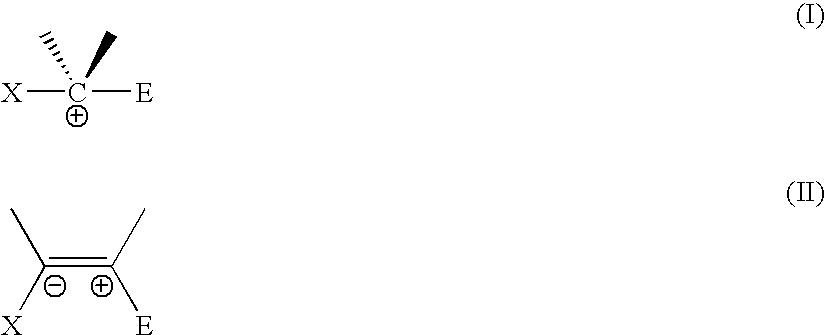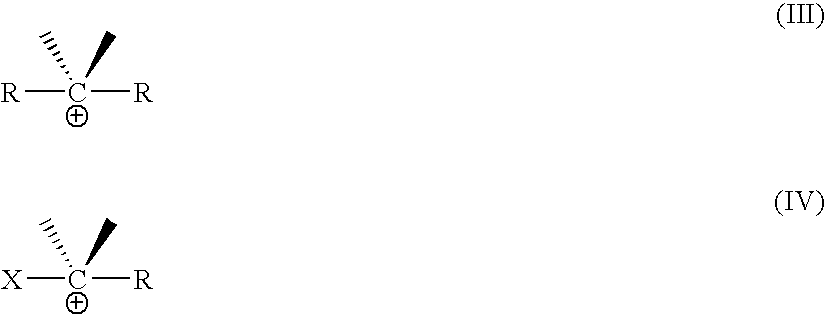Synergistic biocidal mixtures
a biocidal mixture and synergistic technology, applied in the field of synergistic mixtures, can solve the problems of interference with a wide range of important industrial processes, uncontrolled growth of microorganisms, and serious consequences for the health of workers,
- Summary
- Abstract
- Description
- Claims
- Application Information
AI Technical Summary
Benefits of technology
Problems solved by technology
Method used
Image
Examples
example 1
[0062]This example shows the antagonistic activity between activated ammonium bromide (AmBr) and 2-bromo-2-nitrostyrene (BNS) under a concurrent fed strategy, against an artificial bacterial consortium in synthetic white water at pH 5.5 and 8.0.
[0063]
ppmppmRatio%SynergyBNSAmBrBNS:AmBrInhibitionIndexBNS* & AmBr @ pH 5.50.760.00100:0 501.000.940.781.2:1.0501.250.901.561.0:1.7501.230.933.131.0:3.4501.320.896.251.0:7.0501.380.8412.50 1.0:14.9501.510.3425.00 1.0:73.1501.280.0029.89 0:100501.00BNS* & AmBr @ pH 8.02.480.00100:0 501.003.790.784.8:1.0501.555.061.563.2:1.0502.083.933.131.3:1.0501.663.106.251.0:2.0501.404.2312.501.0:3.0502.015.6425.001.0:4.4502.870.0042.14 0:100501.00*BNS—2-Bromo-2-nitrostyrene
example 2
[0064]This example shows the synergistic activity between activated ammonium bromide (AmBr) and 2-bromo-2-nitrostyrene (BNS) under a sequential fed strategy, using a one hour delay between the additions, against an artificial bacterial consortium in synthetic white water at pH 5.5 and 8.0. Through step administration of the biocides, the negative interaction between the actives is minimized and / or eliminated to yield biocidal enhancement.
[0065]
ppmppmRatio%SynergyBNSAmBrBNS:AmBrInhibitionIndexBNS* & AmBr @ pH 5.50.770.00100:0 501.000.570.781.0:1.4500.80*0.621.561.0:2.5500.92*0.583.131.0:5.4500.97*0.506.25 1.0:12.5501.080.1712.50 1.0:74.4501.070.0014.67 0:100501.00BNS* & AmBr @ pH 8.02.190.00100:0 501.001.780.782.3:1.0500.86*1.841.561.2:1.0500.94*1.673.131.0:1.9500.96*1.036.251.0:6.1500.86*0.4012.50 1.0:31.4500.97*0.0015.91 0:100501.00*BNS—2-Bromo-2-nitrostyrene
example 3
[0066]This example shows the synergistic activity between activated ammonium bromide (AmBr) and 2-bromo-2-nitro-propane-1,3-diol (Bronopol, BNPD) under a concurrent fed, against an artificial bacterial consortium in synthetic white water at pH 5.5 and 8.0.
[0067]
ppmppmRatio%SynergyBNPDAmBrBNPD:AmBrInhibitionIndexBNPD* & AmBr @ pH 5.51.160100:0 501.001.120.781.4:1.0501.011.141.561.0:1.4501.081.113.131.0:2.8501.150.876.251.0:7.2501.150.2312.50 1.0:55.4501.010.0015.41 0:100501.00BNPD* & AmBr @ pH 8.01.340100:0 501.001.080.781.4:1.0500.84*1.111.561.0:1.4500.91*1.033.131.0:3.0500.93*0.896.251.0:7.0500.98*0.4612.50 1:27.0500.99*0.0019.53 0:100501.00*BNPD—2-Bromo-2-nitropropane-1,3-diol
PUM
| Property | Measurement | Unit |
|---|---|---|
| Percent by mass | aaaaa | aaaaa |
| Percent by mass | aaaaa | aaaaa |
| Fraction | aaaaa | aaaaa |
Abstract
Description
Claims
Application Information
 Login to View More
Login to View More - R&D
- Intellectual Property
- Life Sciences
- Materials
- Tech Scout
- Unparalleled Data Quality
- Higher Quality Content
- 60% Fewer Hallucinations
Browse by: Latest US Patents, China's latest patents, Technical Efficacy Thesaurus, Application Domain, Technology Topic, Popular Technical Reports.
© 2025 PatSnap. All rights reserved.Legal|Privacy policy|Modern Slavery Act Transparency Statement|Sitemap|About US| Contact US: help@patsnap.com



